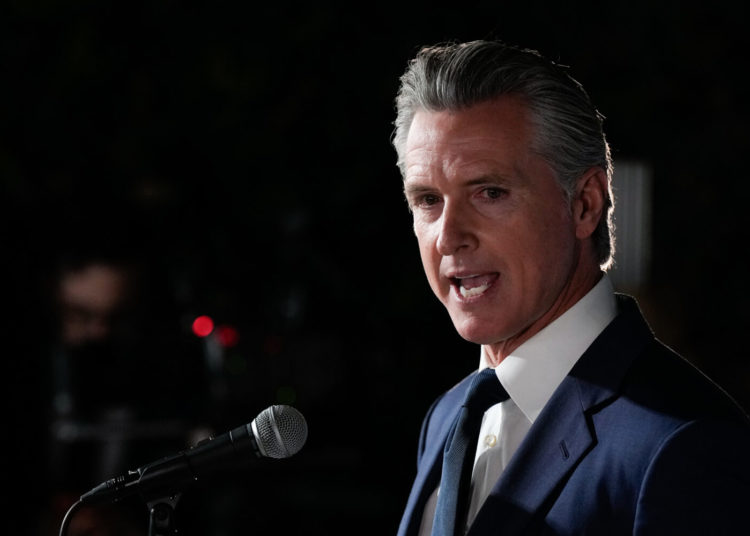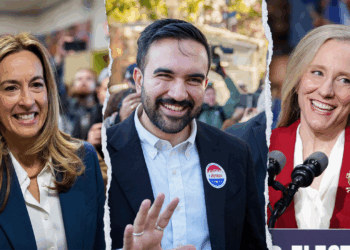On the first day of every month, Ethel Ingram goes to the grocery store with $171 in federally funded food stamps and a nearly impossible mission: Buy enough food for the next 30 days. She usually fails. A couple of weeks into most months, she’s forced to pursue another goal: visiting enough food banks to stock her refrigerator until the month ends and her account reloads. But this month, the government shutdown cut off food assistance to her and millions of others. Now Ingram’s options to feed herself are dwindling. Her account balance remains zero, and the food banks she relies on are more crowded than she has ever seen them.
This is what happens when a record-long government shutdown affects millions of Americans who are already struggling with the high cost of food, housing, child care, and just about everything else. The Supplemental Nutrition Assistance Program has stopped issuing payments for the first time in its 61-year history, leaving a sudden gash in the social safety net. For the nearly 42 million SNAP beneficiaries, November 1 was the day that the government shutdown became intensely personal.
“November’s going to be kind of rough,” Ingram, a 76-year-old resident of Sanford, Florida, told me. Last week, she visited a local church’s food drive, where she was able to get two pieces of meat she hopes will sustain her for the week. “I’ve got my other bills coming up. I’ve got my light bill; I’ve got my water bill; I’ve got car insurance. It’s going to be rough.”
Stories of overwhelmed food banks and hunger-stricken families have pushed members of Congress to finally begin serious discussions about bringing the 35-day shutdown to an end. Combined with snarled air traffic (Transportation Secretary Sean Duffy said today to expect “mass chaos” at airports if the government remains shut down next week), sudden closures of Head Start programs, and the risk of another missed paycheck for federal workers, the SNAP cuts could represent the most significant development yet in a shutdown that has at times felt invisible. As tens of millions of people begin to feel the impact of the largest anti-hunger program going dark, the government closure has begun to morph from a nuisance into an emergency.
One in eight Americans relies on SNAP to help make ends meet, a population that includes a large portion of children and seniors as well as parents hovering near the poverty line despite working full-time. Many of the beneficiaries live in Republican districts and voted for Donald Trump in the 2024 presidential election, which was dominated by cost-of-living issues. A year later, members of Congress are hearing emotional tales of mothers who are planning to skip meals so their children can eat, minimum-wage workers who are forced to rely on the kindness of strangers for sustenance, and families who are having to choose which bills to forgo in order to buy a little food.
Senate Majority Leader John Thune, a Republican from South Dakota, said yesterday that he is “optimistic” a resolution might be at hand, hinting that the quiet negotiations taking place between Democrats and Republicans in recent days may be making progress. Congress is set to go on a weeklong recess next week, so the coming days will be crucial in determining whether there is enough momentum to strike a deal or whether millions of Americans will approach Thanksgiving facing government-inflicted austerity.
Even food banks, which typically receive bountiful donations during the holidays, are confronting concerns that demand may outstrip supply if the shutdown does not end soon. Greg Higgerson, the chief development officer at Second Harvest Food Bank of Central Florida, told me that several of the nonprofits his organization partners with—such as the church Ingram visited—have called in recent days with dire warnings. They are “concerned about their food supply and how quickly they feel like they’re going to go through it in the next week or two,” he said. “Unfortunately, we don’t have a whole lot to tell them.” Despite serving some 300,000 meals each day, his organization is no match for the SNAP program’s reach, he said. For every meal provided by a food pantry, SNAP—which typically spends more than $8 billion a month on benefits—has the capacity to provide nine, according to Feeding America, a network of more than 200 food banks.
During past government shutdowns, the program has continued to issue assistance. The U.S. Department of Agriculture, which oversees SNAP, appeared to be following that precedent before abruptly changing course last month. A detailed plan for using contingency funds to cover SNAP was removed from the USDA website, which in October began featuring a series of partisan banner messages attacking “Radical Left Democrats” for the predicament. The most recent message on the taxpayer-funded website says “the well has run dry” for SNAP benefits and, without evidence, accuses Democrats of prioritizing “gender mutilation procedures” over hungry families. After a group of Democrat-led states and nonprofit organizations filed lawsuits challenging the Trump administration’s decision to cut off SNAP benefits, two federal judges last week ruled that USDA must use contingency funds to keep the program going.
The agency told the court yesterday that it would be able to fund only half of people’s normal benefits, and that the funds could take weeks or even months to arrive. USDA said it would not tap a separate emergency account that would have allowed the payment of full benefits this month. (That account, it said in court filings, is earmarked for children’s-nutrition programs and might not be backfilled by Congress should it be used for SNAP.) Trump, who has used the shutdown to punish his perceived political enemies and shield those he sees as allies, offered a partisan take when asked last week about the shutdown. “Largely, when you talk about SNAP, you’re talking about largely Democrats,” he told reporters on Friday. But Republican beneficiaries in rural parts of the country, where food insecurity and poverty affect millions of people, are being hit hard as well.
A planned food distribution at a site in Hohenwald, Tennessee, was canceled last Thursday because of a “lack of supply,” organizers posted on Facebook. The announcement led to a rush of concerned phone calls, emails, and Facebook messages from residents in a county that Trump carried last year with 82 percent of the vote. “People are just very disappointed, and I think they’re scared,” Tonya Woodward, the CEO of Hope Hohenwald, a nonprofit that organizes the distributions, told me. “And sometimes they might not be completely out of food, but they’re scared they’re going to run out.” Jenny Bauer, who volunteers at a local food pantry and owns a discount grocery store in the area, told me the SNAP cuts are hitting rural Tennessee especially hard. “Our community already struggles with food insecurities,” she said. “Along with the rising food and living costs, it can get pretty scary.”
Trump has so far done little to publicly treat the shutdown as an emergency. He told CBS News’s 60 Minutes recently that the country had not reached a breaking point, asserting that “it’s been much worse” in the past. He has repeatedly said that he would not allow Democrats to “extort” him into cutting a deal on health-care subsidies in order to fund and reopen the government. Today he posted on Truth Social that SNAP benefits had previously been offered to many undeserving people and will be restarted “only when the Radical Left Democrats open up government, which they can easily do, and not before!” (White House Press Secretary Karoline Leavitt clarified that the president was not planning to defy the court orders that required the payments to begin.)
In recent days, Trump has been calling for Congress to eliminate the filibuster and pass a funding bill along party lines, a proposal that has been rejected by GOP leadership. Democrats—and some Republicans—have said for weeks that Trump must engage in negotiations in order to bring an end to the shutdown. But with SNAP cuts hurting their constituents, some lawmakers appear ready to play a leading role in finding a solution that would fund the government.
Senate leaders are discussing pairing a vote to reopen the government with a commitment to hold a separate vote in the near future on health care, along with other concessions. A bipartisan quartet of House lawmakers unveiled a proposal yesterday to extend the Affordable Care Act subsidies for two years, while instituting income caps and other changes. The plan, the legislators said in a statement, would “inspire bipartisan collaboration across Washington and help get Congress back to work for the American people.”
Some lawmakers have pointed to today’s elections as a pivotal moment in the shutdown. Both Democrats and Republicans have contended that allowing voters to have their say could offer an off-ramp after more than a month of debate and repeated failed votes. But Democrats remain divided over how far to advance their fight against Trump. Some told me in September that it was important to show they would be willing to take extraordinary measures to challenge the president’s norm-breaking approach to governing. But few at the time predicted that their party—which typically has opposed government shutdowns—would be willing to withhold their votes on a funding bill for more than a month.
Democrats will be parsing the results in gubernatorial races in New Jersey and Virginia, and in New York City’s mayoral race. The mayoral race features two leading candidates—Zohran Mamdani and Andrew Cuomo—that represent the schism between the party’s activist base and establishment wing. Mamdani has campaigned relentlessly on affordability and suggested he would tackle food-insecurity problems in the city by opening municipally run grocery stores, a policy Cuomo has ridiculed as a “Soviet-style” pipe dream.
If Mamdani wins decisively, some Democratic lawmakers may feel emboldened to challenge Trump more aggressively on the cost-of-living challenges Americans are facing—including the rising health-care costs at the core of the shutdown debate. Jolene Mullins, the vice president of the South Florida Hunger Coalition, told me that when “people are worried about how they’re going to feed their kids,” lawmakers in Washington cannot simply follow the traditional political playbook. Still, she told me she is worried about how much pain the shutdown is inflicting on vulnerable people—including thousands of parents losing child care as a result of Head Start closures.
“I don’t want the Democrats to budge and give up what they’re standing for with the ACA,” said Mullins, who met with lawmakers in Washington last week. “But there’s got to be some kind of conversation. We can’t be like this. This cannot be endless.”
For people like Ingram, ending the shutdown is a matter of existential urgency. In the meantime, she told me, she will continue trawling her community food banks, hoping they don’t run out.
The post America’s Hunger Crisis Could Be What Ends the Shutdown appeared first on The Atlantic.




